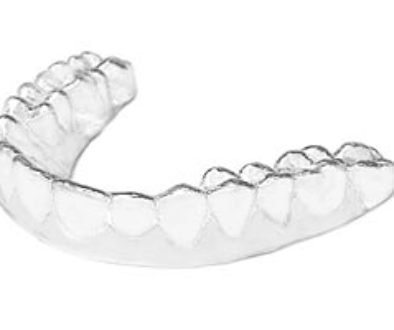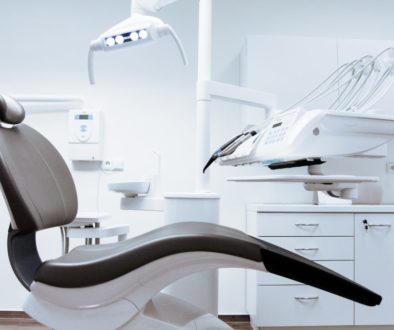Local Anesthetics Used In Dentistry
Ever wondered what is in the anesthetics that your dentist gives you? I’ve got all the information you need here.
Topical Anesthetic (Pre-numbing gel)
Most dentists will place a topical anesthetic on the tissue where the needle will be inserted. This helps reduce and in some cases remove entirely the initial “prick” you get when they give you a shot. Unfortunately, because it only numbs the very top area you can still get some discomfort. Perhaps someday, a better topical anesthetic will come out is able to numb these areas more deeply.
Benzocaine (20%) – Benzocaine is by far the most common topical anesthetic used in dentistry. It is quite effective at numbing the top 1-2 mm of tissue when left in the area for 30 seconds up to about 2 minutes.
TAC – TAC stands for Tetracaine – Adrenaline – Cocaine. It is a pretty standard topical anesthetic in medicine but not widely used in dentistry. It is quite a bit more effective than standard benzocaine but it’s common side effect is causing the tissue to slough off afterwards which can be pretty painful.
EMLA – This stands for “Eutectic Mixure of Local Anesthetics”. There are quite a few different combinations ranging from 2-4 different anesthetics used. Again, this is used quite a bit in medicine and pretty rarely in dentistry. It also tends to cause some sloughing of the tissue afterwards.
Local Anesthetics
The local anesthetic is the anesthetic that your dentist injects you with to actually numb your tooth or teeth. Each type of local anesthetic is slightly different and each has their own set of benefits and downsides. The most important parts of a local anesthetic are it’s safety, duration of action, and effectiveness.
Lidocaine (Xylocaine) – Lidocaine is the most commonly used local anesthetic, although it is quickly being overtaken by Articaine in many areas. It has a medium duration of action, is effective, and has a good safety profile. You’ll usually be numb for anywhere from 2-4 hours when this is used for the injection.
Articaine (Septocaine) – Articaine is probably the most effective local anesthetic dentist have available to them today. It tends to diffuse through bone better and provide more effective anesthesia. It has a medium duration of action similar to lidocaine. The biggest downside to articaine is that it comes in a more concentrated solution than lidocaine and your dentist can’t use quite as much.
Bupivicaine (Marcaine) – Bupivicaine is mainly used in oral surgery when your dentist or oral surgeon would like you to be numb for a LONG time! Especially for wisdom tooth extractions or implant placements this can be very helpful. It has a very long duration action (about twice as long as lidocaine or articaine). It does have a higher risk of causing rare heart complications.
Mepivicaine (Carbocaine) – This is the local anesthetic most often used when your dentist would like to avoid the use of epinephrine (for medically compromised patients, especially with heart problems) or for people who have an allergy to metabisulfite (see the section on additional ingredients). As a result, it’s duration of action is shorter than most other anesthetics.
Prilocaine (Citanest) – This is used in many of the same situations as mepivicaine is used. It can also be used without epinephrine.
Outdated Local Anesthetics
Novocaine (Procaine) – Many people still think that dentists used Novocaine. This has pretty much been phased out of dentistry today because it isn’t as effective and has a much higher rate of allergies than the previously mentioned local anesthetics.
Cocaine – Did you know cocaine is still occasionally used as an anesthetic in certain medical procedures. The biggest benefit to cocaine is that in addition to it’s anesthetic effects, it also causes the blood vessels in the area to constrict, decreasing bleeding. Most other local anesthetics require the addition of epinephrine to achieve the same effect. On the same note, high doses can cause heart problems, which is often seen in people who abuse cocaine recreationally.
Other Ingredients In Local Anesthetics
Vasoconstrictor – Most local anesthetics (with the exception of cocaine) cause blood vessels in the area to get bigger (dilate). This increased blood flow can cause problems with bleeding during surgery as well as increasing the rate at which the local anesthetic is removed from the area. As a result, most local anesthetics include epinephrine or a similar vasoconstrictor to make the blood vessels smaller. This helps the local anesthetic to have a longer duration as well increasing the amount your dentist can give you.
Sterile water – The local anesthetic as well as the other ingredients are dissolved in sterile water.
Antioxidant – Sodium Metabisulfite is used to keep the epinephrine from breaking apart and becoming ineffective. This increases the shelf life of local anesthetics. Most allergic reactions to local anesthetics are a result of this specific ingredient. There are formulations without it.
Possible Complications and Side Effects of Local Anesthetics
Racing heart – The most common side effect I see as a dentist, is people who say that their heart feels like it is racing. Some people say that they feel like they are having a panic attack. This is a side effect of the epinephrine in the local anesthetic. In addition to causing blood vessels to constrict, it can also stimulate your heart temporarily. This side effect usually goes away within a couple minutes after the injection.
Soreness of the injection area – Anywhere the needle pierced will likely be sore a day up to a week. This is especially true of nerve block injections for the bottom teeth where the needle must pass through several muscles. It isn’t unusual to have significant soreness when opening and closing your mouth for about a week following.
Bruising – If the needle nicks an artery it can cause bleeding in the area. This bleeding leads to bruising. It is a random occurrence and your dentist can’t do much to avoid this.
Allergy – Most allergies to local anesthetics aren’t actually to the the local anesthetic itself. It is usually to the metabisulfite that is used to keep the epinpherine from breaking down. If you’ve had an allergic reaction to a local anesthetic, ask for the version without preservatives.
Prolonged anesthesia or paresthesia – In very rare circumstances (about 1 in 10,000 odds) there can be nerve damage as a result of an injection. The damage can be caused by the needle brushing the nerve, too much pressure in the space, or the anesthetic itself causing some toxicity to the nerve. This is another of those random occurrences that your dentist can’t do much about. The good news is that most cases of nerve damage will resolve on their own within about 6 months.
Methemoglobinemia – Some anesthetics such as benzocaine or prilocaine can cause a problem where you develop a higher level of methemoglobin in your blood than what is normal. This causes your oxygen carrying capability to go down leading to a variety of symptoms. The most noticeable is your skin turning a blue color (cyanosis). Treatment with oxygen and methylene blue is highly effective.
Overdose – This is very rare in adults but much more likely to occur in children as they can have a very limited amount of local anesthetic. A local anesthetic overdose causes problems with the functioning of your nervous system as well collapse of your blood vessels. Untreated overdoses can be fatal.




